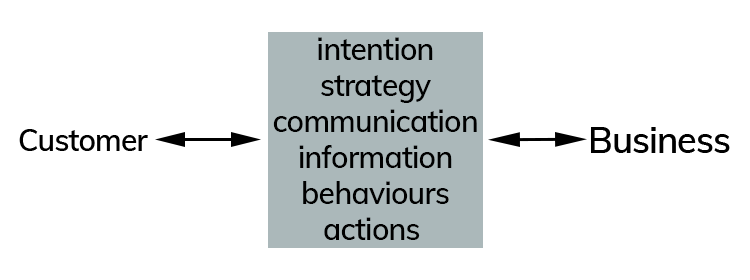
When people in business hear the term ‘sales system’ they usually associate it with some sort of platform, application, or CRM. Some place where all the sales troubles and other bits will be contained, from pipeline management to post-sales calls, or anything in between.
At Barrett, when we talk about a ‘sales system’, or a ‘systems-approach to selling’ we refer to something different.
Sales System
A Sales System is an open system that exists within the environment of an organisation and interacts with its markets, customers, competitors and society. A Sales System, like Marketing, is the interface between our business and our markets and customers. A functioning Sales System forms a well-coordinated super highway or interface of intention, strategy, communication, information, behaviours and actions that flow smoothly back and forth between the customer’s world and that of our business.
We all have some sort of sales system in our businesses, whether it was built by design or emerged by default. The important question is ‘How well is your system working?’
Imagine a sales system – a sales super highway or interface- with no rules, not guidelines, no direction, no clear strategy, and every salesperson doing their own thing with their own resources and devices trying to get somewhere. The result is chaos and turbulence. And lots and lots of noise and distress.
What we have found is that too many businesses have created a one way traffic sales operation – that is pushing their sales team out to find and win more and more sales, while almost detaching them for the rest of the business. There are no feedback loops, lack of understanding of the market and their customers within large parts of the business, a lack of consistency and synergies.
Many executives and sales leaders tend to focus primarily on results – doing the numbers and aiming for short term targets – quarterly results are all that seem to matter and nothing is ever truly connected to the rest of the business – so sales remains ‘that team over there’. If the sales teams attempt to capture any information from the field with any one or more of the thousands of sales pipeline and forecasting apps and CRMs out there, they soon become overwhelmed and the business ends up with poor or faulty data and poor execution. Under the pressure of sub-par results, managers or L&D then throw training at their sales teams to fix their ever mounting sales issues. So it’s not surprising that sales apps and training have become the quick fix diet pills of the sales excellence world.
What’s wrong with this situation?
It’s just piling more stuff and activity on more stuff and activity adding to the chaos and not achieving much. People then treat the symptoms of poor sales performance and not the cause. Which is why they grab for apps and training. We need to take a step back and see if there is a better way to navigate our sales journey and sell better with less stress and chaos.
When I’ve shown our sales system to seasoned sales leaders, they usually breathe a sigh of relief because we have accounted for the many variables that they juggle every day and they can see a coordinated system which makes it easier to navigate and manage their sales teams and operations.
But no effective sales system can operate without strong leadership and stewardship from the CEO, executive team and down. This works best if it is adopted company wide. Without support from the top and sales leadership on the ground to uphold the integrity of your sales system – the super highway interface between your business and markets- sales will revert to chaos.
And we’ve seen this happen too.
Our 25 years at Barrett has taught us that the selling profession can transforms lives and careers, and Sales Systems lead organisations toward thriving communities, viable economies and healthy environments.
So why leave sales to chance?
Remember, everybody lives by selling something.
Related topics
Selling better faster – Total sales team turnaround
Case study – How to do it properly


New Article Email Notification